Pashmina is the epitome of luxury. But it often raises the question: Is it exclusive to a certain group, or can anyone wear a Pashmina? Known for its softness, elegance, and warmth, it has a long history rooted in the Himalayan regions. The delicate shawls, handwoven from the fine wool of Changthangi goats, have been a symbol of status and sophistication for centuries. Royalty has adored it for centuries and everyday people cherish it alike. Today, Pashmina’s allure extends far beyond its origins, captivating the global fashion world with its timeless charm.
Pashmina shawls and scarves continue to grace runways and wardrobes around the world. Hence, the idea of who can wear them becomes more relevant. From formal events to casual street style, Pashmina has proven itself to be versatile and accessible. It also managed to appeal to diverse tastes and cultures. It is no longer confined to the closets of the elite, as its global popularity grows. This has indeed transformed it into a staple for fashion lovers everywhere.
So, we explore whether Pashmina is suitable for everyone, regardless of age, gender, or occasion. We will dive into the cultural significance of Pashmina, and its craftsmanship. We will know why it remains a sought-after accessory for people of all backgrounds. By examining its history, versatility in fashion, and appeal across demographics, we’ll discover why anyone can embrace the elegance of Pashmina.
What is Pashmina?

Pashmina is more than just shawls. It is the art of transforming fine Cashmere wool into luxurious shawls and scarves that are celebrated around the world. The term "Pashmina" comes from the Persian word "pashm," meaning wool. It specifically refers to the undercoat of the Changthangi goats, native to the high-altitude regions of Ladakh, India. This delicate wool, famous for its softness and warmth, is a result of hand-combing done during the molting season. As such, artisans collect the finest fibres. They then employ age-old techniques of hand-spinning, weaving, and embroidering to create these shawls. Thus artisans elevate simple Cashmere wool from raw material to a coveted luxury product.
The craftsmanship behind Pashmina production is labor-intensive and meticulous. Skilled artisans dedicate weeks or even months to transform the delicate fibers into elegant shawls. The wool is first hand-spun into fine yarn, followed by hand-weaving on traditional wooden looms. Often, the finishing touch involves intricate hand embroidery, further enhancing the value and beauty of each piece. This time-consuming process not only preserves the authenticity of the craft but also ensures the uniqueness of each shawl, making it a symbol of exclusivity and refinement.
Cultural Significance
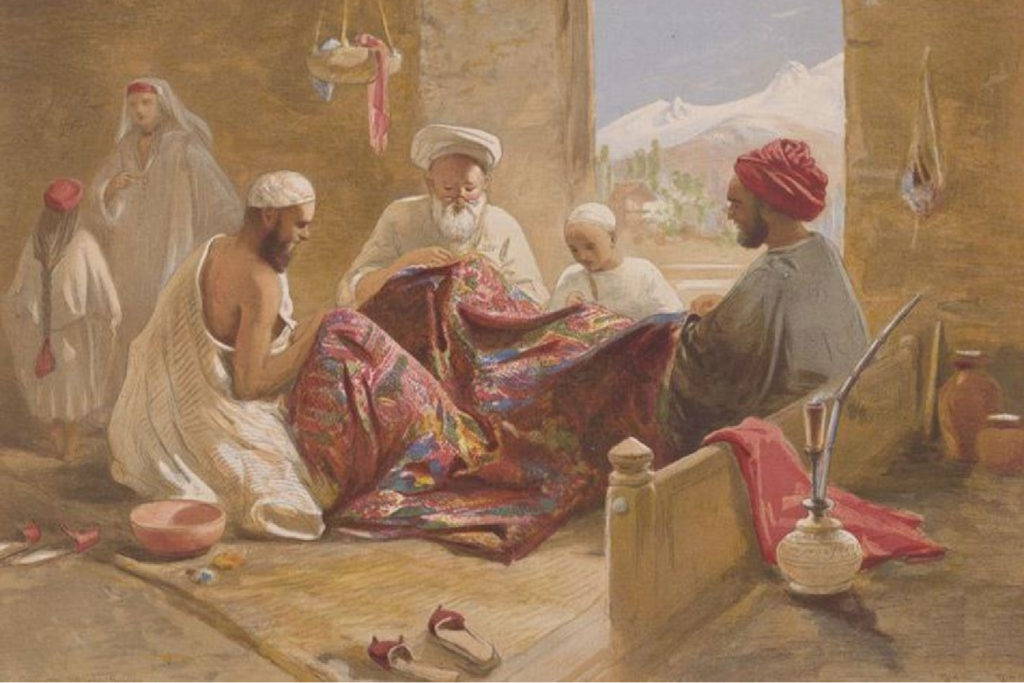
For centuries, Pashmina has held a special place in the traditional attire of the people of Kashmir and Ladakh. Historically, only royalty and nobility, wore Pashmina shawls, symbolizing wealth, elegance, and status. Kings exchanged them as gifts during special occasions or religious festivals, reflecting the high regard for this luxurious fabric. The intricate craftsmanship and the long history of Pashmina weaving have earned it a deep cultural significance, making it a symbol of heritage and pride in the regions where it originated.
The beauty and cultural importance of Pashmina extends far beyond its material value. Each shawl represents the skills passed down through generations of Kashmiri artisans, who have perfected the art of working with this delicate wool. By wearing Pashmina, individuals not only embrace a piece of fashion but also participate in a rich cultural tradition that honors craftsmanship and artistry.
A Global Symbol of Luxury
In today’s world, Pashmina has transcended its regional roots to become a global symbol of luxury, comfort, and style. No longer confined to the wardrobes of royalty, people from all walks of life now wear Pashmina shawls. Fashion icons, celebrities, and public figures have embraced the elegance of Pashmina, often spotted wearing these shawls at high-profile events. This has further cemented Pashmina’s status as a sought-after accessory, admired for its fine texture, lightweight warmth, and timeless appeal.
While Pashmina is still crafted in the traditional regions of Kashmir and Ladakh, its reputation as a luxury item makes it a favorite across the globe. The blend of heritage, quality, and exclusivity makes Pashmina a versatile piece that complements any wardrobe, regardless of style or occasion. So, can anyone wear a Pashmina? Absolutely. With its universal appeal and cultural significance, Pashmina has become a timeless accessory that all can embrace.
The Versatility
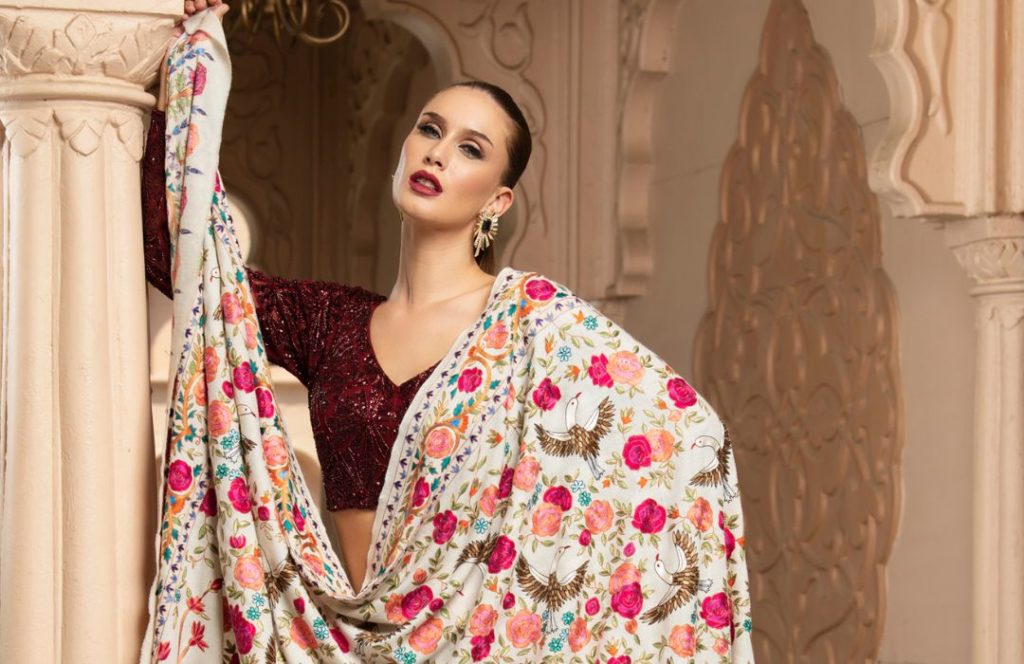
Pashmina has become synonymous with luxury, elegance, and timeless style. Its allure goes beyond cultural boundaries, appealing to people from all walks of life. But one question remains: Can anyone wear a Pashmina? The answer is a resounding yes. Pashmina’s versatility makes it suitable for people of all ages, and genders, and for any occasion, offering not just warmth and comfort but also a touch of sophistication to any ensemble. Let’s explore how Pashmina adapts to different seasons, demographics, and events, proving its universal appeal.
Pashmina for All Seasons
One of the standout qualities of Pashmina is its adaptability to various climates. Cashmere wool comes from the fine undercoat of Changthangi goats, which inhabit the harsh, cold climates of the Himalayas. This makes Pashmina shawls naturally insulating and warm, yet surprisingly lightweight.
During the colder months, it provides ample warmth without adding unnecessary bulk, making it a perfect alternative to heavy coats or jackets. Its natural fibers help regulate body temperature, ensuring comfort even in freezing temperatures. One can layer it over dresses, suits, or casual outfits to add both warmth and elegance. The fine texture also makes it easy to fold and store in a handbag, making it a convenient choice for anyone seeking both practicality and style.
But Pashmina’s versatility isn’t limited to winter. Its breathable fabric makes it ideal for transitional seasons like spring and fall. A light Pashmina shawl draped over the shoulders on a cool evening adds just the right amount of warmth; it doesn't overwhelm the wearer. During these seasons, one can style it as a fashionable accessory to complement lighter outfits. Hence it effortlessly blends functionality with chic style. Whether for a brisk autumn walk or a cool summer evening by the sea, Pashmina offers comfort and grace all year round.
Pashmina for All Ages
Pashmina’s appeal spans across generations, making it a perfect accessory for people of all ages. Younger adults often gravitate toward Pashmina for its ability to elevate formal attire. Whether attending a wedding, prom, or a black-tie event, one can drape Pashmina elegantly over a gown or suit, adding a layer of sophistication. Its various styling options, from scarves to wraps, allow younger wearers to experiment with their look while keeping things timeless and classy.
For middle-aged individuals, Pashmina serves as both a functional and fashionable accessory. It’s perfect for layering over business attire, offering a polished look in professional settings. Whether worn to a meeting or draped over a dress for a night out, it adds a refined touch that transcends trends. Its lightweight warmth makes it easy to wear in any season. It also ensures it remains a versatile staple in any wardrobe.
Seniors, too, appreciate Pashmina for its comfort and elegance. The soft, luxurious fabric feels gentle against the skin, making it a practical choice for older individuals seeking warmth without compromising on style. Whether attending family gatherings, religious ceremonies, or cultural events, Pashmina provides both comfort and a sense of occasion. Its ability to blend seamlessly with traditional and modern outfits makes it a beloved choice for seniors looking to feel graceful and stylish.
Pashmina for Different Genders
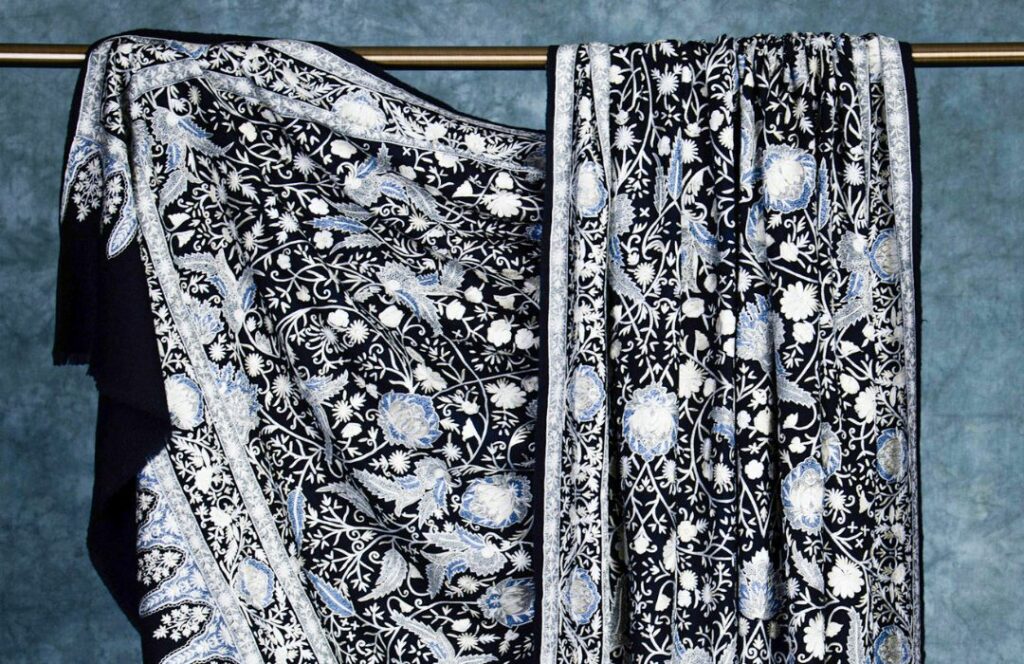
While many often associate Pashmina with women, its appeal is far from gender-specific. Men, too, have embraced it as a stylish and functional accessory. Historically, male royalty and nobility, especially in South Asia, have worn shawls as a symbol of prestige and sophistication. Today, Pashmina scarves and wraps are becoming increasingly popular among men who appreciate fine craftsmanship and luxury fabrics.
Pashmina scarves, in particular, are an excellent choice for men seeking a stylish yet understated look. Worn casually over a suit or even paired with a jacket and jeans, a Pashmina scarf adds a subtle touch of elegance. Celebrities and fashion-forward men have embraced it for its versatility and comfort. Whether for a formal event or a casual outing, it offers men a refined, gender-neutral accessory that is both practical and stylish.
Also read: Holiday Gift Guide – Men’s Pashmina Shawl
Pashmina for Every Occasion
One of Pashmina’s most remarkable qualities is its ability to adapt to various occasions, from casual outings to formal events. These shawls and scarves can elevate an outfit, making them a go-to accessory for weddings, cultural festivals, business meetings, and evening dinners. The fine drape of Pashmina complements everything from traditional attire to modern clothing.
For formal occasions like weddings or cultural ceremonies, a Pashmina shawl draped elegantly over the shoulders enhances any outfit, adding an element of luxury and tradition. Pashmina also serves as a wonderful gift during such events, symbolizing respect and gratitude. In casual settings, a Pashmina scarf can be wrapped loosely around the neck or styled as a wrap, instantly elevating an everyday look with minimal effort.
Styling Options
Pashmina’s versatility extends to its numerous styling options, making it a highly adaptable accessory. It can be worn as a shawl, draped over the shoulders, or wrapped around the neck as a scarf. Its large size and lightweight texture allow for creative styling, whether you prefer a casual wrap or a more formal drape. For men, a simple Pashmina scarf can be tied around the neck or left loose to create a polished look.
Pashmina pairs beautifully with both traditional and modern attire. It can be worn with an elegant sari or salwar kameez for a traditional look, or paired with jeans and a casual top for a modern, chic style. The variety of colors and designs available also means that Pashmina can be chosen to match different moods, outfits, and occasions.
Can anyone wear a Pashmina? Absolutely. Pashmina’s adaptability, cultural significance, and universal appeal make it a timeless accessory that transcends age, gender, and occasion. Whether for warmth, style, or a touch of luxury, Pashmina offers something for everyone.
Cultural and Religious Significance
Pashmina plays a prominent role in religious and cultural celebrations worldwide, such as Diwali, Eid, and Christmas. Its luxurious texture and intricate craftsmanship make it a cherished accessory for festive occasions. During Diwali, it is often gifted or worn as a symbol of elegance and tradition, adding a touch of luxury to the celebrations. In Muslim communities, Pashmina shawls are commonly worn during Eid prayers and festivities, providing both comfort and a sense of cultural pride. Similarly, in Christian celebrations like Christmas, Pashmina serves as an elegant wrap, making it a popular choice for church services or festive gatherings. The versatility and refinement of Pashmina make it a timeless piece suitable for all these occasions.
A Symbol of Respect and Modesty:
Across many cultures, shawls and scarves represent modesty and respect, making Pashmina an ideal choice for formal and religious ceremonies. In regions where covering the head or shoulders is a sign of reverence, Pashmina's soft and luxurious fabric offers both style and cultural appropriateness. Whether draped over the shoulders during a wedding or used to cover the head during religious ceremonies, it reflects grace and elegance while adhering to cultural customs. Its fine weave allows for subtle, tasteful coverage without compromising on aesthetics, which makes it a preferred accessory for those seeking to balance tradition with sophistication.
Can anyone wear a Pashmina? Absolutely. Its universal appeal, cultural significance, and timeless elegance make it transcend borders, faiths, and traditions.
Why Pashmina is Universally Comfortable?
Pashmina is universally recognized for its unparalleled comfort, making it a favored choice across different climates, styles, and personal preferences. Its unique qualities ensure that anyone can enjoy wearing it, regardless of where or how they plan to use it.
Lightweight Warmth
One of the key reasons for Pashmina's widespread appeal is its ability to provide warmth without the bulkiness of traditional wool garments. Unlike heavy woolen coats or thick scarves, Pashmina shawls and scarves offer the perfect balance between warmth and lightness. This makes it comfortable to wear for extended periods, whether indoors at a formal event or outdoors during chilly weather. Its lightweight nature also makes it easy to carry, pack, and layer, offering warmth without compromising mobility or style. This feature answers the question, "Can anyone wear a Pashmina?" with a resounding yes, as its comfort and practicality suit all age groups and settings.
Softness and Skin Sensitivity
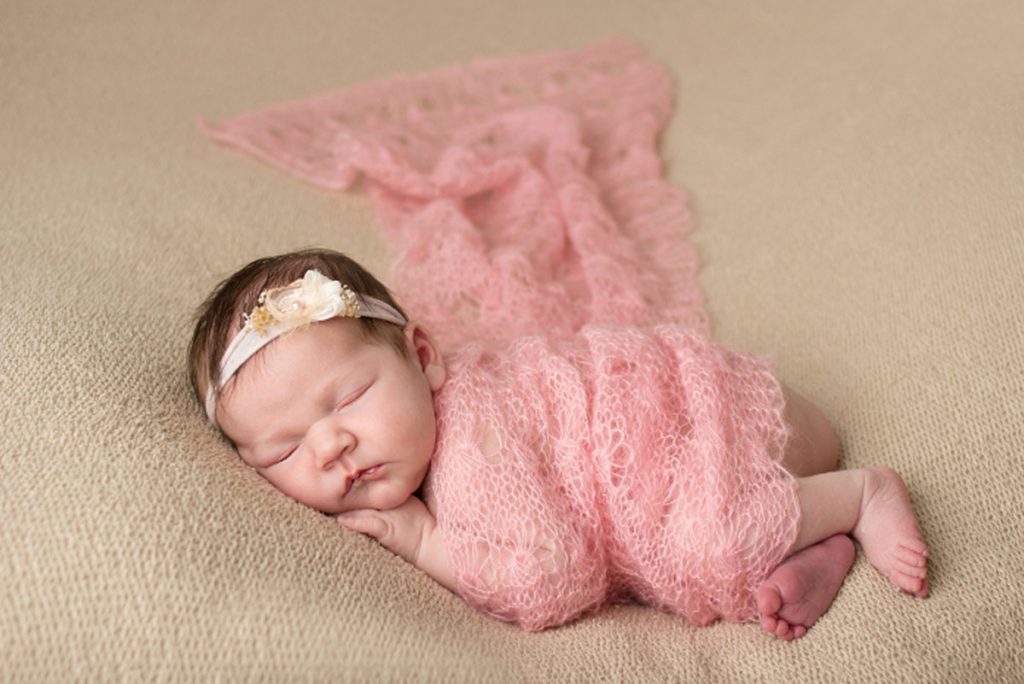
Another hallmark is its softness, which distinguishes it from other types of wool. Pashmina’s fine fibers, sourced from the undercoat of Changthangi goats, give it an ultra-soft texture that feels gentle against the skin. This softness makes Pashmina especially suitable for people with sensitive skin or allergies to coarser wools. Unlike traditional wool, which can feel scratchy and irritate the skin, Pashmina’s smooth texture is soothing and luxurious, ensuring a pleasant wearing experience. Those who struggle with skin irritation from other fabrics find comfort in Pashmina, making it an inclusive option for people of all sensitivities.
Breathability
Pashmina’s natural breathability further contributes to its universal comfort. The fine fibers allow air to circulate, making it an ideal accessory for both cold and warm climates. In colder weather, it provides warmth while still allowing the skin to breathe, preventing overheating. During warmer months, Pashmina can be draped lightly, offering comfort without causing excessive sweating. This adaptability makes it a year-round accessory, suitable for everything from winter layering to a light wrap on a cool summer evening.
The combination of lightweight warmth, exceptional softness, and breathability makes Pashmina a truly comfortable and versatile luxury item that anyone can wear.
Why Pashmina is a Fashion Staple?
Pashmina has become a fashion staple that transcends trends, seasons, and generations. Its timeless elegance, sustainable production, and durability make it a prized accessory, answering the question "Can anyone wear a Pashmina?" with an affirmative yes, as it suits every age, style, and occasion.
Timeless Elegance
Pashmina's appeal lies in its classic, timeless elegance. From its origins in the royal courts of India to its current status as a global fashion statement, it has maintained a presence that never fades. Its soft texture, rich colors, and refined craftsmanship make it a versatile piece that adds sophistication to any outfit. Whether it’s draped over an evening gown or wrapped casually around the neck, Pashmina instantly elevates the look. Fashion trends may come and go, but Pashmina’s graceful style remains constant. Its ability to seamlessly transition from traditional attire to modern outfits is what keeps it relevant across centuries. Indeed, it is an eternal fashion accessory.
Sustainability and Ethical Fashion
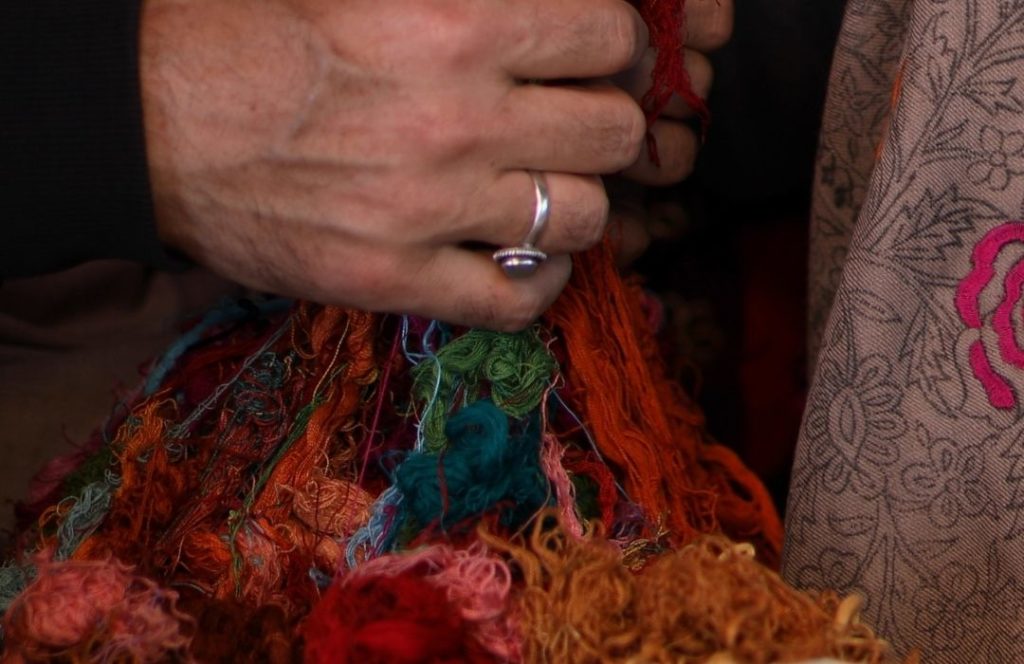
In a world increasingly aware of the environmental impact of fast fashion, Pashmina stands out as an ethical and sustainable choice. The production of Pashmina shawls involves careful, hand-crafted processes, often carried out by skilled artisans in Kashmir and Ladakh. Unlike mass-produced fabrics, Pashmina is made from the fine undercoat of Changthangi goats, and its wool is collected in an eco-friendly manner, without harming the animals. The process of spinning, weaving, and dyeing Pashmina products involves traditional methods that minimize the use of chemicals, water, and energy, making it a low-impact fabric on the environment.
Additionally, supporting production helps sustain traditional craftsmanship that has been passed down through generations. It offers an alternative to fast fashion, where garments are often mass-produced under unethical working conditions. By choosing Pashmina, consumers are not only investing in a luxury item but also supporting local artisans and preserving age-old weaving traditions. This ethical consideration enhances Pashmina’s value as a fashion staple in the modern era.
Durability and Investment
Pashmina shawls are known for their durability, making them not only fashionable but also a worthwhile investment. When cared for properly, a high-quality Pashmina can last for decades, retaining its softness, warmth, and beauty. This makes it a valuable wardrobe piece that far outlasts the fleeting lifespan of many fashion items today. Moreover, these shawls and scarves often become treasured heirlooms, passed down from one generation to the next, preserving both family tradition and cultural heritage.
While Pashmina may come with a higher price tag, it offers long-term value. Unlike trendy accessories that go out of style, a Pashmina piece never loses its charm. It is a timeless investment that continues to add elegance to every outfit for years to come. The durability of these shawls, combined with their luxurious feel and ethical production, makes them more than just a fashion statement—they are a symbol of thoughtful consumption and sustainability.
Conclusion
Pashmina is a universally appealing accessory, offering something for everyone, regardless of age, gender, or occasion. Its incredible versatility allows it to be worn in all seasons and styles, whether as a cozy shawl in winter or a light scarf during spring. Pashmina’s lightweight warmth, softness, and breathability make it a comfortable choice for people of all ages, while its timeless elegance ensures it suits both casual and formal events. It holds cultural significance, cherished in religious and cultural festivals around the world, and remains a global symbol of luxury.
So, can anyone wear a Pashmina? Absolutely. Its unmatched beauty, comfort, and adaptability make it suitable for anyone seeking to add a touch of refinement to their wardrobe. Men and women alike, regardless of their personal style or the occasion, can embrace the charm of Pashmina. It’s more than just a luxury item; it’s a piece of cultural heritage that has stood the test of time.
If you’ve never experienced the luxury of Pashmina, now is the time to explore it. Whether you’re looking for a stylish addition to your own collection or searching for a meaningful, thoughtful gift, it offers elegance, comfort, and a timeless appeal that transcends trends. Embrace the art and experience firsthand why this treasured fabric remains a beloved choice worldwide.
Also read: What does the Pashmina symbolize?